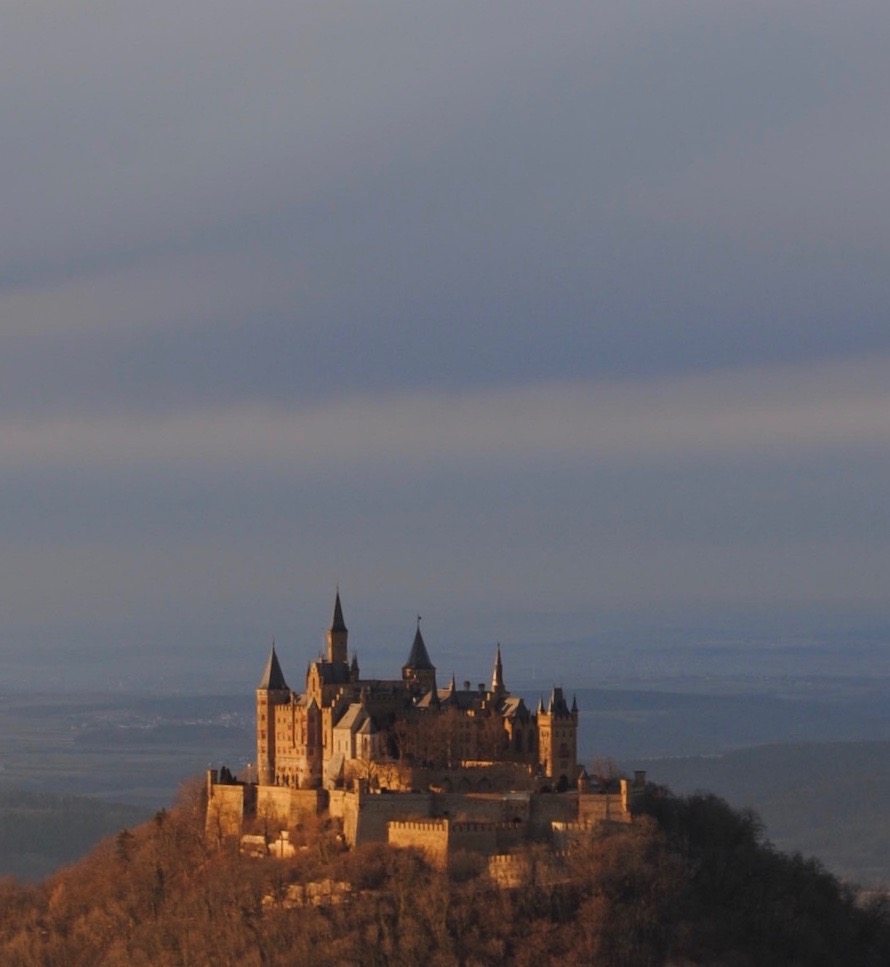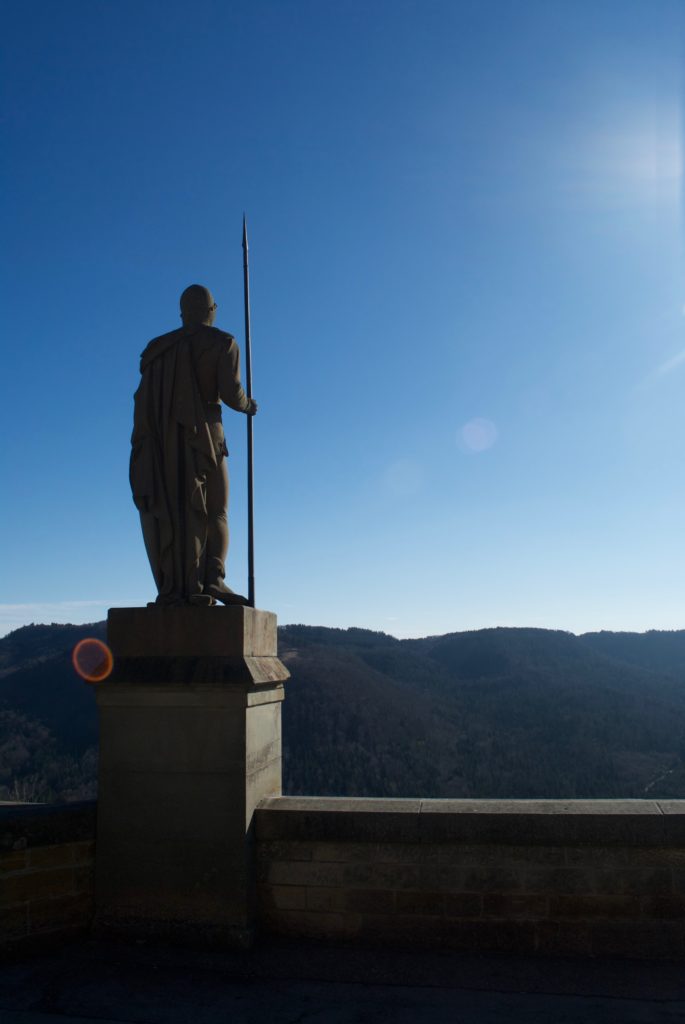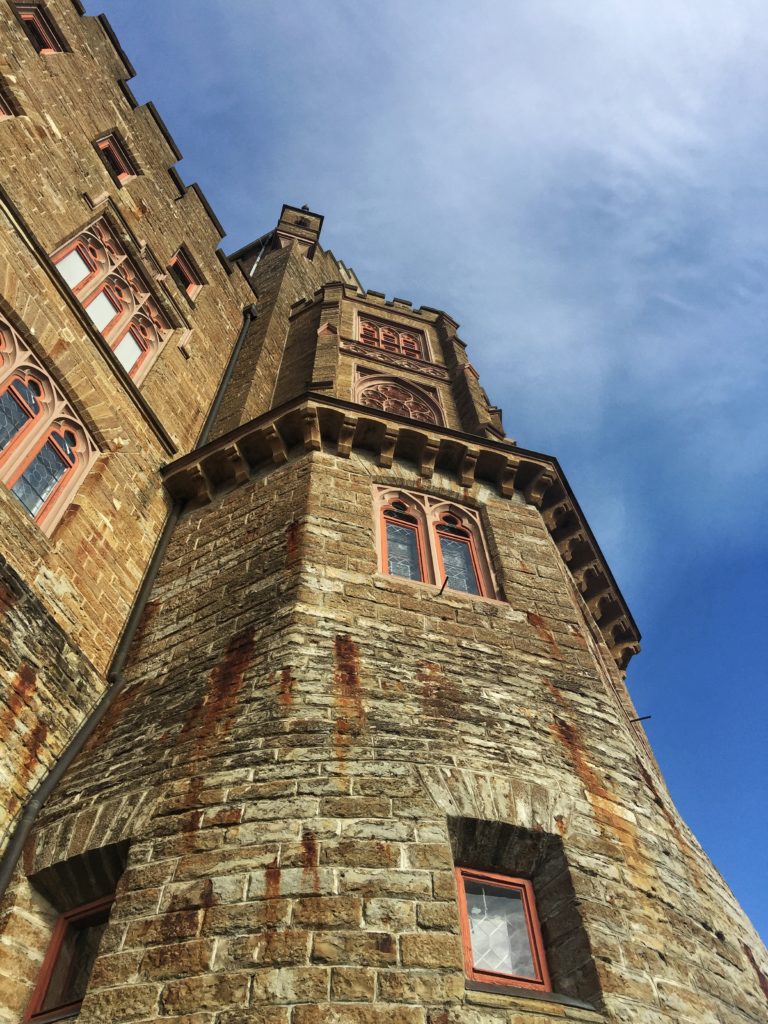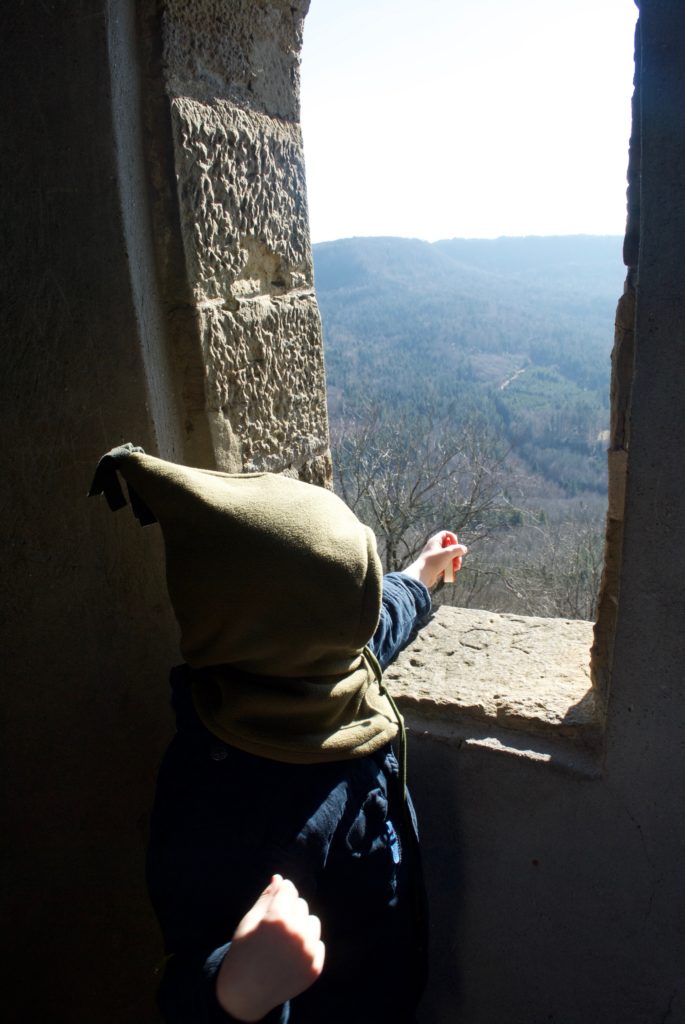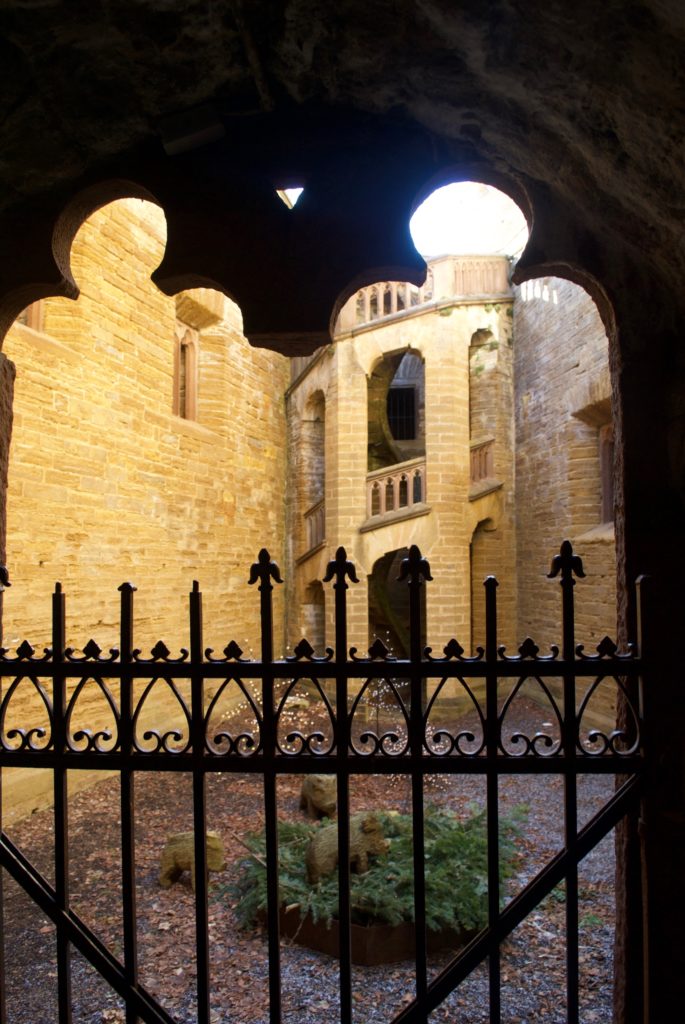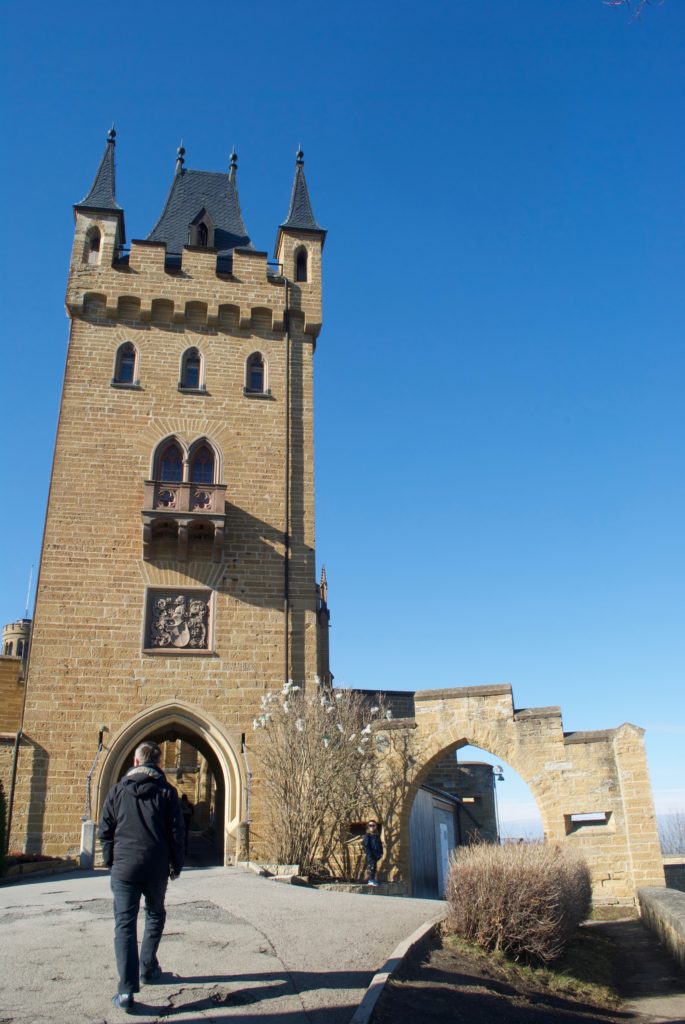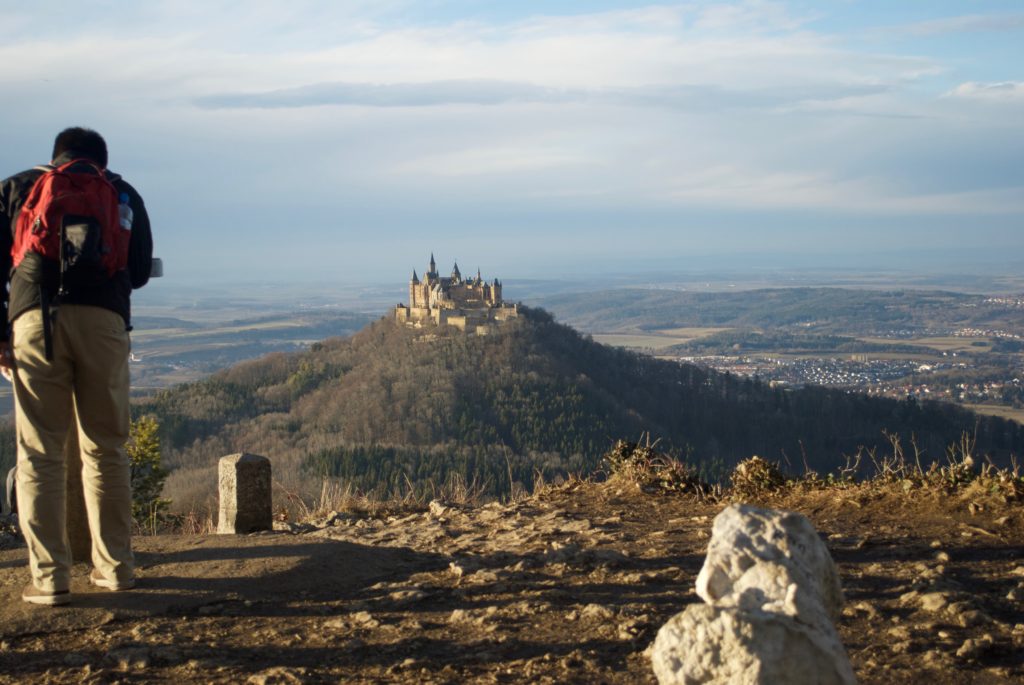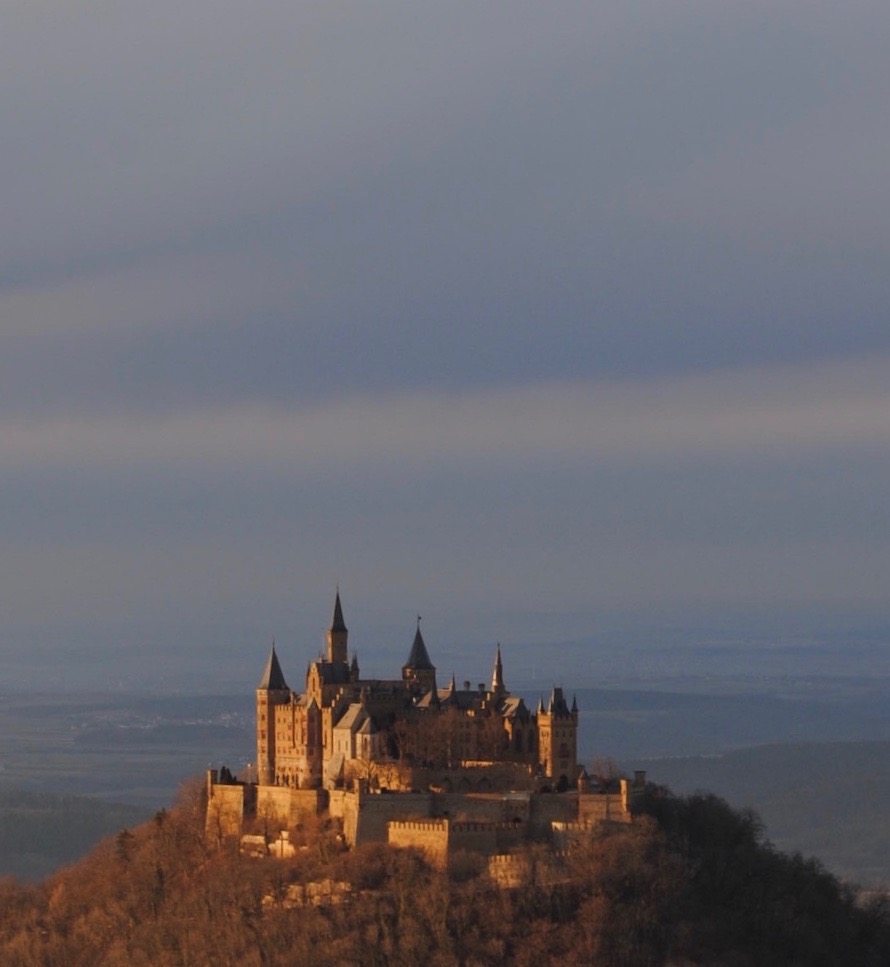The Hohenzollern family has a long and illustrious past in Prussia, so it might cause some confusion to find their ancestral seat down south in Baden-Württemberg. Prussia was one of their more famous holdings, but the family originated in Swabia (which is partially contained in the current state of Baden-Württemberg) near the site of this castle.
The current castle is the third to be built on the Berg Hohenzollern, and it’s more of a memorial to the might of the Hohenzollern family than a home or even a fortress. When it was built in the mid-19th century, there were upheavals all through Baden, Bavaria, and the Palatinate as the many smaller states made their shuddering way into Bismarck’s German Empire. Burg Hohenzollern version three came to be right in the middle of this, and I’m sure the giant idealized castle on a hill was a bit of a heavy-handed exercise in Making A Point.
They don’t get into it on the tour, however, probably because the castle is privately owned by the Hohenzollern family.
Interestingly, neither of the previous versions of the castle were destroyed during the Thirty Years War, which ravaged so much of this end of Germany. The medieval castle built in the 11th century withstood a year of siege by the collected armies of the Swabian Free Imperial Cities, and a junior Hohenzollern brother, before it was completely destroyed in 1423. The second one was constructed about 100 years later, and it flipped around between the Habsburgs and the French before everyone seemed to lose interest in it, and it was abandoned from 1798 onwards. This is all detailed in a mural in one of the hallways inside the current castle.
What to see and do
When you come to visit Burg Hohenzollern, you can see it from kilometres away, standing proud and exceptionally castle shaped on top of its little mountain. It does look like a very large child has dropped it from the sky.
You can approach the castle on foot from the parking lots, or by taking a minibus up for about 3 Euros. If you’re going as a family, definitely take the minibus as the walk up is an energetic hill climb, and there will be walking once you’re up there. You buy your tickets at the bottom, and they are checked as you enter the castle. You will want to arrange your places on an English-language tour when you check in at the top castle gate – it is the only way to see the interior rooms. This is a common feature of castles in the region, by the way. The tours are fairly quick, about 45 minutes or so, but buggies are not allowed inside. On the tour, the kids get to wear ‘royal robes’ which feature heavily in the family portraits on the walls, so my son was pretty chuffed about that. If you have a squirmy one under 5 years old, the tour may not be worth it. It’s worth noting you can’t take photos of any kind inside during the tour.
There’s an outdoor cafe kiosk serving pommes frites, snacks, coffee, hot chocolate, ice cream, and that sort of thing in the courtyard. There are lots of tables, and it’s quite beautiful really, so if you need to kill time while someone else does the tour, it’s not much of a hardship. There’s a white tablecloth restaurant inside, but if you’re wrestling small people, this is probably not your deal either.
The winding walk up to the castle courtyard, and the exterior walks, are beautiful and afford pretty astounding views out over the countryside. The walls along the edge are not very high in places, however, and there are not the railings you may be used to, so it’s best to keep firm hold of little hands.
The best photo spot for Burg Hohenzollern
The dramatic photos of the castle from a distance are taken from a specific view point about a half an hour drive away. This sounds like an extra thing that is too much of a pain with kids in tow, but to be honest, there’s a good 20-minute walk up a trail before you get there, and it was a really good break from all the driving in the car. The viewpoint itself is amazing, even if you don’t take many photos, but it is very unofficial, and it’s literally a rocky outcropping with a steep drop-off. There is no railing, and it’s a bit intense. If you have a under-five that likes to dash away from you, this is best viewed back from the edge with firm hand-holding. My active seven year old was fine, and there are a few benches. We were there firmly in the off-season, and it was FREEZING, and there were three guys having beers sitting on the rocks, two other photographers fussing over their shots, and us. I can imagine this spot gets very very busy in the summer. To get there, park in the lot next to the Zollerstieghof, and take the white gravel path that goes around the back of the hotel. I found this place thanks to Be My Travel Muse. I think it’s really worth finding this spot, the drive there is through several picturesque little German towns and the walk is lovely. The view is truly breathtaking, coming out of the trees and seeing this spread out before you.
Where to eat: Ochsen
While driving home, we decided to find somewhere other than a fast food place, and a rapid translation of German Yelp netted us this local gem in Balingen. Ochsen is a very local place. Like ten tables, and at least three of them seem to know each other in that neighbours running into each other at the grocery store kind of way. The single waiter was very friendly, and we had a selection of Swabian dishes that were wonderful. Pork and beef in paprika sauce, käsespätzle (noodles with cheese sauce), and excellent pommes frites. There’s a small kids menu too. You’re going to need your Google Translate ready to go if you can’t read German – there are no English menus and we had all our conversations with the waiter in (simple) German. It’s also cash only, but there’s a ATM just up the road. Walk off your meal in the beautiful village of Balingen, with half-timbered houses all over the place. This is not on any tourist trail, so enjoy this little corner of the proper Swabian countryside.

